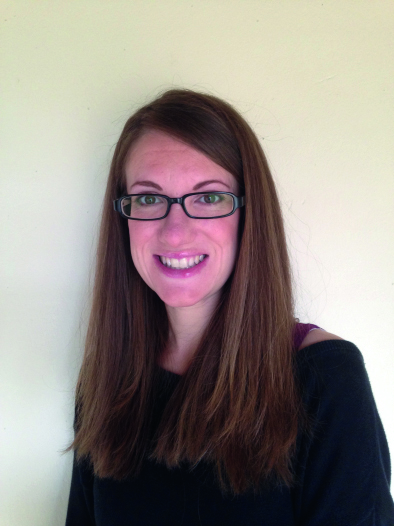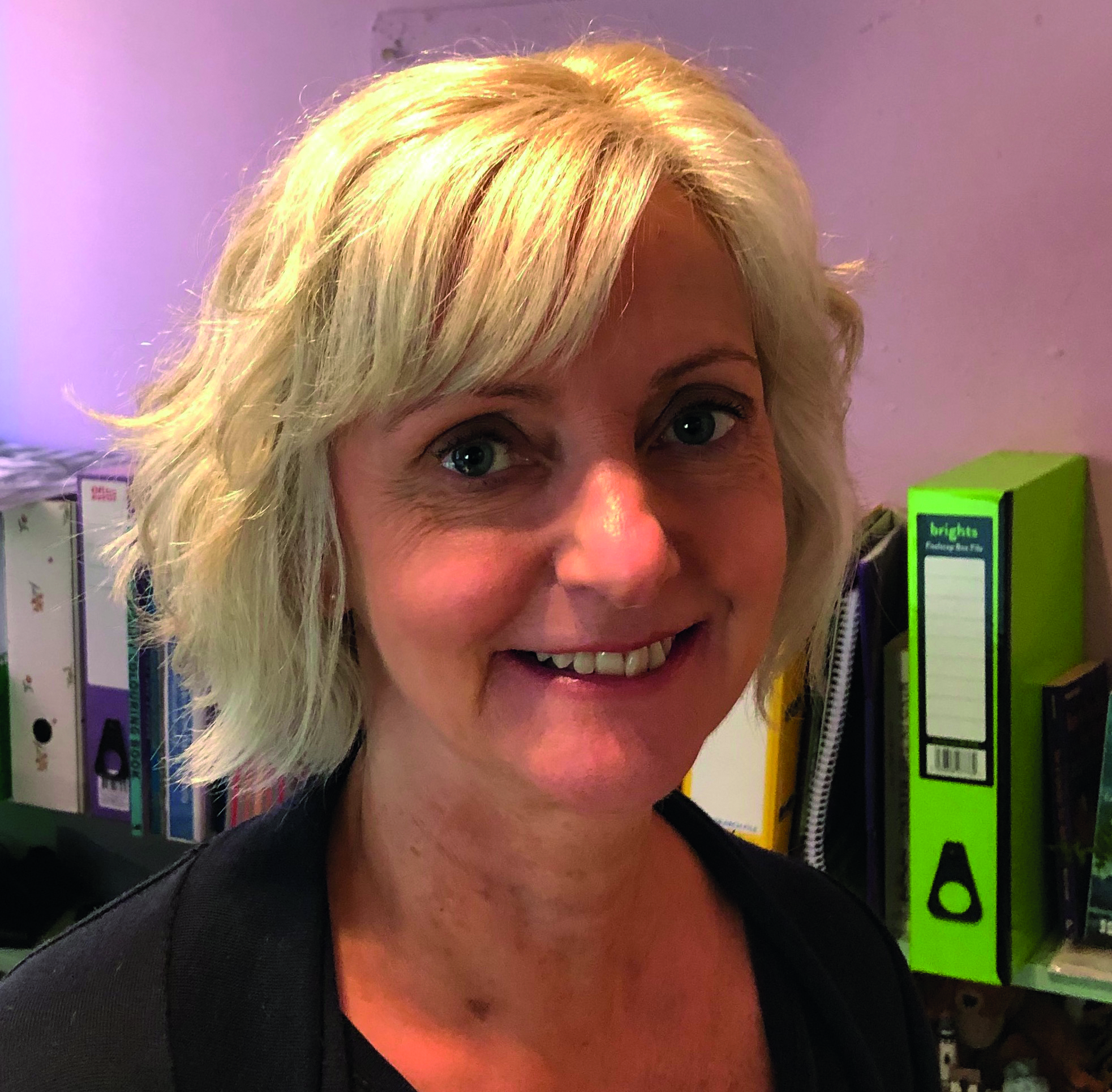
With the launch of the revised EYFS and a great deal of discussion among professionals on how to effectively observe and map children’s development without the use of tick-boxes, 2021 marked a catalyst for change.
Paperwork is now in the process of being pared down, settings have more choice in the way they deliver the EYFS and, slowly but surely, professional judgement is being brought back to the fore.
These developments have undoubtedly created a new opportunity for management software companies to come up with creative, digital solutions that move away from their former style of programs, which tended to link children’s ‘progress’ directly to statements in practice guidance Development Matters.
The publication of practice guidance Birth To 5 Matters (B25M) – in addition to the re-written Development Matters – has provided new impetus around software design. In fact, B25M has actively collaborated with software companies around the changes.
B25M project co-ordinator Donna Gaywood says the need for practitioners to re-evaluate how they think about children’s learning and development – and ensure the child is at the centre – is now being reflected in the way software developers are designing their programs.
‘They are supporting the sector by discouraging practitioners from being able to create tick boxes,’ she says. ‘They want to get this right: for the settings, their families and the children.’
SUPPORTING A CURRICULUM
Seventeen EYFS reporting software providers have been licensed to use the material in B25M guidance under the proviso that the statements will not be used as tick-lists and they will not break down each age range or individual statement into categories such as emerging, developing and secure. This is important in the eyes of experts as such an approach reduces assessment to a level which is inappropriate and not particularly helpful.
Tapestry, developed by Foundation Stage Forum in 2012, was the first online learning journal to enable educators to capture children’s learning and development throughout the day. It works with 18,000 settings from early years to Key Stage 2, predominantly in the UK but also across 40 countries.
Dr Helen Edwards, co-founder and former Ofsted inspector, says, ‘We stood firmly in our belief in 2012 with the launch of non-statutory guidance Development Matters (DM), that assessing young children should not simply be completed by ticking the DM statements – and we lost customers as a result to other software companies that allowed this.
‘So the 2021 reforms were really welcome. However, we are now seeing people on Facebook uploading documents where they’ve broken down Development Matters into smaller steps.’
Both DM and B25M have been uploaded onto Tapestry as reference material, but the statements cannot be used as an assessment framework. It has also added an ‘areas of concern’ screen, which allows practitioners to feed through all the observations they have made for the child, and a ‘Reflections’ feature, which allows collaborative working with other practitioners.
Significantly, Ofsted is now looking for settings to develop their own curriculum based on the statutory framework, which offers a progression of knowledge and skills for the children who attend.
Dr Edwards adds, ‘You will decide on your curriculum, what your babies, toddlers, pre-schoolers and Reception children are going to learn and have access to. You’re no longer assessing them against the DM statements. You’re assessing them against the curriculum that you’ve designed for your children.’
This change allows settings the freedom to look at their individual cohorts of children and decide if they need more help with speech and language or more challenging resources for fine motor skills.
But for some settings that have been used to ticking off statements in DM, there have been concerns about how to work in a different way. Questions include: How do I get my staff upskilled in child development so that they know what’s next for a child and what’s typical? How can I make all these changes when I’m only just surviving the effects of Covid?
In line with this, many settings are devising their own in-house training based on the guidance documents DM and B25M.

'A PEDAGOGICAL TOOL'
The Development Map software programme was devised by early years consultant Di Chilvers, who previously worked for the National Strategies. Disillusioned with the excessive collection of data and meaningless paperwork, she set up the company in 2015 to help change the way the sector observed, assessed and planned for children’s development, learning and progress.
She says, ‘We have never used tick lists. We follow a developmental continuum model which previously used the overlapping ages and stages and now use the Birth to Five Matters ranges and overlapping age strands.
‘We evolved in phases; recently we integrated Birth to 5 Matters and the changes to the EYFS and also introduced the SEND Mode and This is Me which enables practitioners/teachers to map children’s finer development and progress.’
David Yates, reception and nursery teacher at Tinsley Meadows Primary Academy, says that the programme has helped the team to make decisions about children’s development and progress more confidently.
He says, ‘Colleagues are now aware of how we genuinely ‘know’ children and families. The children now come first in our observations, learning stories and conversations.’
The Development Map software programme is used alongside a consultancy, training and CPD package.
Di Chilvers describes the Development Map as a ‘pedagogical tool’ which supports the understanding of how children develop and learn and the practices through which adults can enhance that process, supported by their knowledge, theory and experience.
The digital package supports on-going dialogues with parents and carers about their children’s learning and progress, which has been ‘invaluable’ during lockdown, she says.
IMPROVING OBSERVATIONS
Nursery software provider Famly, founded in 2016, provides an all-in-one digital nursery management solution for 3,700 settings, 400,000 parents and 63,000 educational staff users across the UK and Europe.
The platform gives parents a social-media-style news feed with highlights from the day, as well as one place to message and collaborate with their children’s teachers to help continue their education at home.
Since the launch of the revised EYFS, practitioners using the system have not been able to link observations to statements in DM.
Matt Arnerich, head of learning and development, says, ‘We strongly believe that we have a responsibility to provide a service that caters for the most experienced teachers in the profession, as well as helping those new to the profession to get a better understanding of child development, which is why we have removed the tick-list facility while still making those statements available to read while educators write their observations.’
But it has not been all plain sailing. He admits, ‘We put on Summer Camps and workshops and had early adopters testing the system. Some nurseries adapted to the changes easily and had never used the tick-box system anyway. Others, after two years of Covid, were understandably exhausted and not ready for more change – which is why we’ve put so many resources into supporting them.’
Ruth Hearn, manager at Twinnie Day Nursery in Greenwich and a practitioner who has been in the early years for three decades, currently uses Famly.
She says, ‘Some of the best observations come from “wow moments”. I say to my staff, “If it stirs a feeling, it’s worth recording.”
‘Famly’s new format supports this approach: instead of hunting for some moment that matches a tick-list, you can let emotion lead. Then you can use the Birth To Five Mattersand Development Mattersreference materials in the sidebar to explore the layers of child development knowledge as you enter your observations.’
Charlotte Bateman, the group operations officer at Little Barn Owls, a Horsham-based, farm and forest nursery group, says, ‘We have laminated “prompts”, kept in an apron worn by educators, supporting them with emergent planning and extending learning.
‘From early 2022 we’ll be able to add these to the reference material section in Famly – something which will be really useful.’
WIDENING THE DIGITAL REMIT
Blossom’s nursery management software, which was established in 2017, offers a bespoke parent communication, learning and management service to more than 800 settings in the UK. The app has been developed with industry input from practitioners at Blossom’s five nurseries, including one of the directors, Sara Thakrar, who works onsite.
The English frameworks currently on the system are: DM 2021; DM 2021 Observational Checkpoints; Characteristics of Effective Teaching and Learning; B25M and the updated Characteristics of Effective Learning; and Montessori framework with links to DM 2021.
Additional curricula covering Scottish frameworks, Getting it right for every child, Realising the ambition: Being Me, and Curriculum for Excellence were launched in early 2022 and Blossom is in the process of extending this to cover additional regions and frameworks. The app also has the ability to add custom curricula for nursery groups.
When making observations in DM, practitioners are still able to link to the individual statements. However, this is optional and there is a new facility where settings can close off all the other frameworks so that they can concentrate on the one that is most widely used.
Nicky Strydom, head of marketing, says, ‘Due to customer demand – particularly for new or less experienced staff – this option is still available. But we also have a licence to use Birth To 5 Mattersmaterial, which allows more experienced practitioners to use their professional opinion on a child and their development.’
MEETING THE NEEDS OF DIFFERENT SETTINGS
 For new kid on the block Nursery Story, which launched in 2021 and now has almost 100 settings, users are becoming more confident with the changes to the system and see the value of a return to a more child-centred and holistic approach to development.
For new kid on the block Nursery Story, which launched in 2021 and now has almost 100 settings, users are becoming more confident with the changes to the system and see the value of a return to a more child-centred and holistic approach to development.
Kat Learner, early years specialist and product lead, says, ‘We’ve been bold in terms of removing links to statements and ages/ranges and encouraged our users to use their in-depth knowledge of each child, with the reference documentation available to them – Birth To 5 Matters and Development Matters – in order to identify whether they need a greater depth of support in a particular area of learning.
‘Much of the feedback that we are weaving into our 2022 development packages centres on designing a flexible system that can meet the needs of different settings, and improving the ways that settings can interact with families.
‘At Nursery Story, we feel this is a defining moment for technology in early years and provides a great landscape for tech businesses to react to the needs of the customers more than ever before with both the adoption of the revised EYFS as well as the increased need for parent communication brought about by the pandemic.’

KEEPING IT SIMPLE
With the last ten years spent refining its software systems, Dave Elebert, CEO and founder of Nursery in a Box, which says it works with 500 settings, identified that the revised EYFS provided an exciting opportunity to support the sector by developing an all-in-one system that could manage a curriculum.
‘Our view was that old technology was complicated and difficult to use with over-emphasis placed on tracking a child’s learning journey,’ he says. ‘This resulted in it taking too much time recording even a simple observation or assessment. We believed that development tracking has a place in any management system, but like most things, it has to be simple, carried out as a balanced approach and delivered correctly.’
Elebert, who has worked in the industry for 17 years, owning and franchising nurseries in the UK and internationally, reports that when his company sought feedback from nurseries about the challenges of the new EYFS, there were wildly different opinions on the best way to go about delivering it.
‘For some, a digital photo and one-line statement was the way; for others, they wanted a more detailed approach with planned observations and assessments on a less frequent basis but still wanted to link this to the EYFS curriculum,’ he says. ‘Some wanted to keep learning intentions (next steps), while others also wanted to benchmark against milestones.
‘Overall the resounding message was that things needed to be simplified for managers, practitioners and parents, with less time spent recording and tracking children’s journeys.’
As a result of its research, Nursery Box focused on three main areas: making digital learning journeys simple and easy to use; empowering nurseries with the choice to deliver the curriculum their way; and improving parent observations from home and encouraging feedback. DM was used as guidance for its new program.
Elebert says, ‘We launched child diaries and child journeys at the end of August 2021 and focused on delivering the new EYFS framework as simply as we could, and in time for the September 2021 introduction.
‘Our child diaries and journeys, and our digital learning journey concept, are proving successful with many settings, particularly as they move away from old technology. We are now able to offer an-all-in-one nursery management system, and this represents a new chapter for us.’
Link to parents
 The pandemic created an opportunity for early years practitioners to embrace technology, particularly as a way to maintain the connection between their setting and home.
The pandemic created an opportunity for early years practitioners to embrace technology, particularly as a way to maintain the connection between their setting and home.
Tapestry’s Dr Helen Edwards (pictured) says, ‘Partnership with parents is a huge focus of Ofsted, so we’ve added an activities feature which cover all the areas of learning so that settings can suggest activities for parents to carry out at home with their children, and upload to Tapestry’.
'Creating a learning link between all children’s caregivers is vital says Matt Arnerich at Famly: ‘There’s their family at home, and their family at nursery, and they need to talk to each other, so important information isn’t lost.’
Early Years expert and Development Map creator, Di Chilvers, believes that when investing in any software system, it is important to find out how well it is explaining children’s development to parents.
She adds, ‘Not only that, but there has to be an interactive, two-way conversation between the setting and the home in order to support children’s development and learning.’
She says it is important to ask these key questions:
- How much is this IT programme doing by way of bringing on parents, listening to children’s and parent’s voices and mapping children’s progress?
- How is it upskilling the people who are using it and helping them to look at the curriculum and where the children fit into it?
- How much is it helping them to focus on child development?
Giving children a voice through digital platforms
Researchers Professor Rosie Flewitt (Manchester Metropolitan University) and Dr Kate Cowan (UCL Institute of Education) have produced guidance to help practitioners reflect on how they might use digital documentation in ways that help to capture the magic and wonder of young children’s learning, and how this might be shared with children and parents.
Funded by the Froebel Trust, the research found that digital video recordings of children’s play helped practitioners to notice and reflect on children’s learning in new ways. This was particularly the case for children who practitioners identified as being harder to observe, and who tended to have fewer observations. This finding suggests that digital documentation can help to identify and highlight signs of learning that may be hard to capture in written notes.
Professor Flewitt says, ‘Following on from this research, in early 2022 we will be working with Sheringham Nursery School in Newham, London, which leads the East London Research School funded by the Education Endowment Foundation. We’ll be exploring how educators and software developers – in this case, Tapestry – can make digital documentation more accessible to children.’
He adds, ‘Tapestry introduced a “child login” feature after our study in 2018. This practice-oriented research will look at how software can support children to have a voice in documentation, complement the setting’s pedagogy and support the relationship between the setting and families.’
Dr Julian Grenier, head teacher at Sheringham Nursery School and Children’s Centre, says, ‘I’m especially interested in the value of children using assessment information as a way of looking back on their learning and talking or thinking about it. My basic message around this issue is do less, and do it better.’
Assessment – what’s changed?
The new EYFS actively discourages practitioners to use the Early Learning Goals or Development Matters‘statements’ as a curriculum, or to track progress. The Department for Education wants practitioners back with children, not hidden behind iPads and clipboards.
There are only three areas in the new EYFS where practitioners are legally required to make some form of assessment:
- The progress check at age two.
- The assessment at the end of the EYFS – the Early Years Foundation Stage Profile.
- The assessment at the start of the Reception year – the Reception Baseline Assessment.
B25M’s Donna Gaywood says practitioners can still have a broad overview of children’s development. In fact, cohort overviews where managers can see who is on track and who needs extra support can be really helpful.
However, breaking down each age range/individual statement into three categories, such as emerging, developing and secure, is ‘not particularly helpful’ and reduces the assessment of learning to just ticking-off statements. ‘Using professional judgement and a “best-fits approach” is more child-focused,’ she adds.
The new Development Matters describes children’s learning and development in three broad pathways: birth to three years, three to four years, and Reception children.
Formative assessment, which is ongoing, has not changed in the EYFS. But periodic assessment, known as summative assessment, which takes place every six weeks or so, and looks at what the child is doing, has changed.
In many schools and settings, it is not a discussion about assessment data any more, but a conversation about the children and their unique progress against the curriculum.
MORE INFORMATION
- guidance-for-practitioners-on-digital-documentation.pdf (froebel.org.uk) was published in February 2020.
- The research article was published on 10 December 2021 (research with settings was carried out in 2018)
- Full article: ‘Moving from paper-based to digital documentation in Early Childhood Education: democratic potentials and challenges’ (tandfonline.com)
Coming up: Look out for an All about… assessment coming up in our April issue. Written by Di Chilvers, this will look at how to understand and record children’s learning paths within the revised EYFS









